CHAPTER < ONE – THE STORY OF LIFE ON EARTH
“Everything is precariously balanced, just right, so that we can exist.” Paleoanthropologist Richard Leakey
Since the dawn of time, the heavens have shaped the conditions for life on Earth. Ours is not a calm world, closed and sealed off from the universe. It is a restless, seething, open planet; encircled and protected only by a delicate bubble of gases. Exposed and assailable, Earth speeds through the deep blackness of outer space on its inexorable path around the Sun. It is believed to be unique in the solar system, for it alone seems to be habitable to life.
Earth’s size, the tilt of its axis, its position in the solar system, the speed at which it travels and the parameters of its orbit in relation to the Sun, are the exact conditions that make life on its surface possible. Like freezing Mars with its violent storms of red dust or hellish Venus with its massive greenhouse scorching; Earth would be an inhospitable planet devoid of oceans, oxygen or life without these essential preconditions. It is Earth’s relationship to the Sun, which has enabled life on its surface to flourish.
Beaming energy across the cosmic expanse of our solar system the Sun warms and lights our planet. The ancients deified this galactic giver of light and warmth, instinctively knowing that it had the power of life and death over them. They understood that the Sun, harbinger of each new day, was the pivot around which their world revolved. For as long as there is life upon this planet this equation will not change. For the Sun, provider of weather, seasons and daylight, has always enabled and guided life here on Earth.
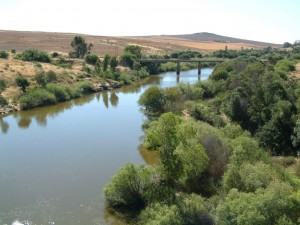 It was Earth’s distance from the Sun that first allowed liquid water, an essential prerequisite of life, to form. Not near enough for solar heat to sear away cloud formation, or too far away for clouds not to form at all, the Earth, third planet from the Sun, was positioned ideally on its path around the Sun for a surface temperature that allowed water vapour to condense and clouds to grow, falling as rain onto the hot, primitive land surfaces of the young Earth. Much of this primeval rain vaporised on contact with the hot crust, but eventually the land surfaces cooled sufficiently for streams and then seas to form. Earth’s gravitational force, a result of its size, allowed it to retain this liquid water.
It was Earth’s distance from the Sun that first allowed liquid water, an essential prerequisite of life, to form. Not near enough for solar heat to sear away cloud formation, or too far away for clouds not to form at all, the Earth, third planet from the Sun, was positioned ideally on its path around the Sun for a surface temperature that allowed water vapour to condense and clouds to grow, falling as rain onto the hot, primitive land surfaces of the young Earth. Much of this primeval rain vaporised on contact with the hot crust, but eventually the land surfaces cooled sufficiently for streams and then seas to form. Earth’s gravitational force, a result of its size, allowed it to retain this liquid water.
Beginnings of Life
Life was slow to appear on the young Earth until about 3500 million years ago, when primitive prokaryote bacteria, simple cells without nuclei and organelles, appeared as the Earth’s first living organisms. After aeons of slow-moving time, Cyanobacteria, or blue-green algae, appeared which formed huge bacterial colonies in the shallow seas, producing oxygen that percolated into the poisonous anaerobic atmosphere, accumulating free oxygen. The increase of relatively abundant free oxygen in the atmosphere, however, created a crisis for the existing anaerobic prokaryotes that led to the evolution of complex eukaryotic cells; cells that have nuclear envelopes, complex chromosomes and membrane-bound organelles.
With the earthly stage set, this development in evolutionary history provided a starting point for the process of evolution as we understand it. And from that slow burgeoning beginning, primordial life developed in a world made habitable by a sunlit surface, warm seas, an oxygen-rich atmosphere and an ozone layer that afforded protection from destructive levels of ultraviolet radiation from the Sun.
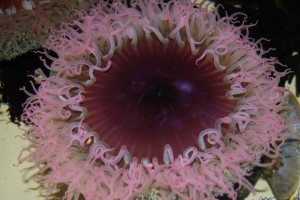 Over thousands of millennia the first plants and trees evolved on land, adding through photosynthesis more oxygen into the atmosphere. In the seas a rich diversity of plant life developed. A multitude of varied vertebrate and invertebrate animal forms also developed, until eventually the seas abounded with marine life. These diverse life forms included seaweeds, sponges, sea snails, trilobites, jellyfish, worms, starfish and many different varieties of jawed fish forms, including giant sharks. The period known as the Age of Fishes had arrived. Over yet more slow-moving time, small soft-bodied creatures left the seas and land-locked freshwater pools and adapted themselves to life on the land, living in swampland at the edge of water. The Age of Fishes had become the Age of Amphibians.
Over thousands of millennia the first plants and trees evolved on land, adding through photosynthesis more oxygen into the atmosphere. In the seas a rich diversity of plant life developed. A multitude of varied vertebrate and invertebrate animal forms also developed, until eventually the seas abounded with marine life. These diverse life forms included seaweeds, sponges, sea snails, trilobites, jellyfish, worms, starfish and many different varieties of jawed fish forms, including giant sharks. The period known as the Age of Fishes had arrived. Over yet more slow-moving time, small soft-bodied creatures left the seas and land-locked freshwater pools and adapted themselves to life on the land, living in swampland at the edge of water. The Age of Fishes had become the Age of Amphibians.
Then insects and reptiles appeared on the Earth, as did dinosaurs, mammals and birds. For 140 million years dinosaurs dominated the forested and swampy land surfaces and then about 65 million years ago a giant asteroid collided with the Earth, setting off fires all over the planet. A stratospheric dust cloud darkened the sky. Worldwide temperatures plummeted and the ozone layer became depleted.
These catastrophes had the effect of extinguishing the dinosaurs, and most other species living at the time of the Cretaceous-Tertiary collision, from the face of the Earth. However, in response to the marvellous cyclicity of life, the disappearance of the dinosaurs opened up ecological niches for early mammals of that far-off time: small rat-sized creatures that fed on earthworms, insects, fruit and seeds.
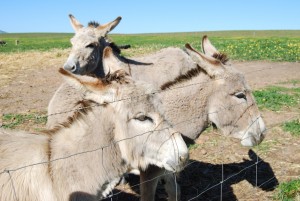 Over approximately 10 million years, these first small warm-blooded mammals opened the way for other mammals to eventually take over the environmental niches that the dinosaurs had filled. The Age of Reptiles was over. At the end of the Cretaceous period, with the disappearance of dinosaurs from the Earth, the Age of Mammals had begun and it was the turn of mammals to dominate the planet with a variety of animal forms as weird and wonderful as that of the dinosaurs. All in all it has taken an unimaginable stretch of geological time, more than half of the Earth’s age, to produce the rich abundance of magnificently varied life forms on Earth today.
Over approximately 10 million years, these first small warm-blooded mammals opened the way for other mammals to eventually take over the environmental niches that the dinosaurs had filled. The Age of Reptiles was over. At the end of the Cretaceous period, with the disappearance of dinosaurs from the Earth, the Age of Mammals had begun and it was the turn of mammals to dominate the planet with a variety of animal forms as weird and wonderful as that of the dinosaurs. All in all it has taken an unimaginable stretch of geological time, more than half of the Earth’s age, to produce the rich abundance of magnificently varied life forms on Earth today.
Evolution on Terra Firma
However, the story of living things is not a gentle one marked by straightforward advances in evolutionary themes. Life is poised too precariously on the Earth’s surface for that. Instead it is an epic of ascendancy and decline spaced in erratic waves like the rollers of a chaotic sea. Over the countless millennia of the history of life species have appeared, progressed, and become extinct, until only a tiny fraction of all the species that have ever existed on the planet remain. Earth’s geological history records five catastrophic mass extinctions when more than half of the planet’s species on land and in the sea disappeared in a relative blink of geological time.
Debate continues in scientific circles as to the causes of these biotic catastrophes as no one knows exactly what caused these episodes of extinction. Chief among the hypotheses is impact of the Earth by asteroids or comets from outer space, massive volcano eruptions around the planet and/or unstable climates resulting in global cooling and warming. Perhaps these mass extinctions were due to a combination of all of these and other as yet unknown factors. But whatever the causes of the mass extinctions, they redirected evolution of the Earth’s creatures time and again into radiations of different forms, each reaching a plateau of maximum evolutionary success and then declining, making room for other species to follow.
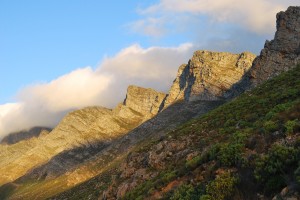 The lithosphere or Earth’s terrestrial mantle is not uniformly a favourable environment in which to live. It is variously a hot dry desert without shade from a pitiless Sun, scorching in the heat of the day and freezing at night. It is fields of black volcanic rock and icy, crevassed glaciers. It is cold, permafrosted steppes, treeless and barren, and it is teeming, steaming swamps. However, it is also golden grasslands and tropical rain forests, lush and green with growth; mountain meadows of fynbos; dusty, brown bushveld and warm, rocky outcrops; white, sandy beaches dotted with coconut palms, and alpine slopes spangled with flowers.
The lithosphere or Earth’s terrestrial mantle is not uniformly a favourable environment in which to live. It is variously a hot dry desert without shade from a pitiless Sun, scorching in the heat of the day and freezing at night. It is fields of black volcanic rock and icy, crevassed glaciers. It is cold, permafrosted steppes, treeless and barren, and it is teeming, steaming swamps. However, it is also golden grasslands and tropical rain forests, lush and green with growth; mountain meadows of fynbos; dusty, brown bushveld and warm, rocky outcrops; white, sandy beaches dotted with coconut palms, and alpine slopes spangled with flowers.
The Earth’s surface is clothed in myriad costumes, each with a different mood. And like a sequined magician’s cloak being blown about on a windy day, it is restless with temperament. Earthquakes, volcanoes, mudslides, tornadoes, hurricanes, avalanches, impacts, drought, fire, flood, and upheaval, subsidence, folding, faulting, and crumbling: the Earth’s mantle is constantly changing and being rent by massive geological rips and tucks. Gargantuan forces that push up mountain ranges and transform continents; these earth-changing forces impose harsh evolutionary challenges but also accelerate evolution, providing opportunities for new species to appear and adapt.
Penguin Parenting
The history of life on Earth is resplendent with the opportunism of living creatures. Over thousands of millions of years of tenure, life on our planet has been impressively tenacious. Extinctions have been followed by bursts of relatively explosive evolution, with new species exploiting diverse ecological niches across a wide array of landscapes. Antarctica is one of the most hostile environments on the planet; a frozen and distant continent weighted under an ice sheet kilometres thick. It is a place of swirling whiteouts, howling blizzards and ferocious cold: an environment so extreme that the famous early 20th Century polar explorer, Sir Robert Falcon Scott, wrote of it, “Great God! This is an awful place.” Yet this forbidding world of snow, ice and rock is home to an array of magnificent creatures that have evolved the means for surviving there.
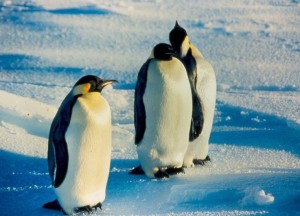 The Emperor penguin is one such creature. With no more than its own bodily configuration and an instinct honed by millions of years of evolution, the Emperor penguin has been able to do what human beings with the advantage of an advanced intelligence, have not. It has been able to evolve a way of living and breeding on this most inhospitable of continents, exposed to freezing weather conditions all year round, with only its own bodily resources as a means for survival. Largest of the penguins at almost a metre tall, the Emperor penguin has a spectacular face and neck colouring of black, white, yellow and reddish-gold.
The Emperor penguin is one such creature. With no more than its own bodily configuration and an instinct honed by millions of years of evolution, the Emperor penguin has been able to do what human beings with the advantage of an advanced intelligence, have not. It has been able to evolve a way of living and breeding on this most inhospitable of continents, exposed to freezing weather conditions all year round, with only its own bodily resources as a means for survival. Largest of the penguins at almost a metre tall, the Emperor penguin has a spectacular face and neck colouring of black, white, yellow and reddish-gold.
They breed during the dark, savagely cold months of winter. The male of the breeding pair incubates the single egg for two months during the harshest part of the Antarctic weather, tucking the precious egg between its feet and a warm fold of abdominal skin. Hatching at the end of winter, the grey, downy chick faces bitter weather conditions. However, the doting Emperor penguin parents take turns to shelter the little chick on their feet, snug and sheltered in their brood pouches.
As it gets older the chick develops the ability to regulate its own body temperature whilst huddling with other chicks in nurseries on the ice. Exposed to shrieking winds and swirling snows, it waits in these communal crèches for its parents to bring it food. Fattening up on a rich gruel of regurgitated krill, squid and fish, the chick grows during the short spring and summer months, laying down a thick insulating layer of fat and later moulting into an adult coat of sleek, waterproof feathers that will ensure its survival in a hostile environment.
Impacts of Weather
The history of life on Earth is governed by extreme variations in the world’s climate. Driving global weather is the amount of heat that the Earth receives from the Sun. Solar energy output is not fixed at a constant. It fluctuates in cycles. When sunspot activity, areas seen as dark spots on the Sun, is at a maximum there is about 20 times more solar radiation than at other times and an absence of sunspots can signal a shift to climatic cooling. Human beings, as well as many other diverse species of the planet, have either profited or suffered from the effects of the resultant climatic changes.
During the 11th to 14th Centuries for instance, a period of unusually warm weather coincided with the Medieval Maximum in sunspot activity. Taking advantage of the fortuitous weather conditions, a Viking settlement was established in Greenland and over time it was able to prosper. Growing to a population of more than 3000 people, the colony consisted of farms scattered along the west coast of Greenland. These hardy Icelandic settlers traded sealskins, walrus ivory and Greenland falcon for iron, timber and luxury goods from Europe. They built a cathedral and established churches as well as an Augustinian monastery and a Benedictine nunnery. They also appointed a Bishop to oversee the community’s spiritual needs, whilst a national assembly supervised their secular affairs.
For a long time life was good for the settlers. Then weather patterns began to change. Sudden cooling, which began around 1325, caused harvests to fail and the population began to decline. As the cold weather increased its grip on the land, people died from malnutrition and other related causes and were buried in shallow ground as permafrost hardened the soil, making deeper burial impossible. With the onset of the cold weather the colony perished, never to be heard of again. This dramatic climatic shift occurred all over the world and is known as the Little Ice Age. Its effects were dramatic, long lasting and far-reaching.
The Little Ice Age continued for several centuries and coincided with two bleak periods known as the Spörer Minimum and the Maunder Minimum, when almost no sunspots were recorded on the surface of the Sun. In the 14th Century European summer droughts brought about famines, which caused whole populations to become so weakened from lack of food that many people became victims of the bubonic plague or “Black Death” of 1348. In the winter of 1422 and 1423 the Baltic Sea froze over. In England during the same period, blizzards howled and the Thames River in London regularly froze over, allowing Ice Fairs to be held on its solid icy surface in calmer weather. Then in the 1660s severe drought in England helped create the conditions that led to the spreading of the great plague and the Fire of London…
You’ve got interesting posts here. Your site can go viral, you need some initial traffic
only. How to get initial traffic??? Search google for: Ferdeck’s tricks